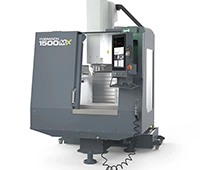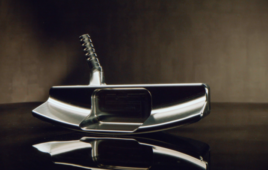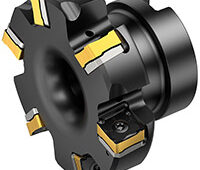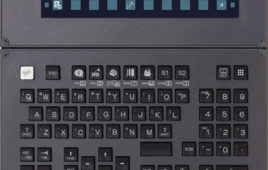For “straight stamping” jobs under one million parts and 25 tons, an integrated stamping and forming operation called fourslide can be more cost effective than power press machines. On parts less than 2-in. wide and less than 0.075-in. thick, the fourslide process has mostly been used for complex work such as that involved with forming, multiple bends, or elements beyond 90°.

In some applications, the use of the fourslide stamping process is more economical and efficient than traditional stamping or a power press.
What makes this process capable of cutting typical tooling costs, halving tooling lead times, and eliminating after-production adjustment is its unique integration of stamping and forming operations. The process begins with the raw material in flat strip form off a coil, which is stamped or blanked in the progressive die section of a fourslide machine. The strip is then fed into the forming section, where four tool-carrying slides approach the part from the four cardinal compass points, forming the material around a central tool or mandrel. The set-up of the machine cams determines the sequence, timing, and number of tool strikes. The four forming tools are simply tool blocks carried by the slides.
The process can produce up to 15,000 pieces per hour depending on part size and complexity. And since the process typically starts with material the width of the finished part, it usually generates little scrap.
The following considerations can help determine when to exercise this manufacturing option.
1. Need to contain project costs. Low material costs, quick setup and turnaround all contribute to low overall project costs.
2. Complexity of form. Because of its unique integration of compound forming operations, the fourslide process can execute multiple bends, even ones beyond 90°, twists, cylindrical forms, and tapped holes. This capability yields precision metal stampings, flat springs, wire forms, contacts and other complex forms for a range of medical, electrical, automotive, aerospace, military, consumer and industrial applications.
3. Lead time. The relative simplicity of fourslide systems and their setup can reduce lead times by 50% or more. The straightforward motion also simplifies laborious after production.
4. Potential for subsequent design changes. If a product is readily subject to market or
technology changes, or the demands of a customer, the fourslide process manages these efficiently. In a fourslide operation, part modification costs less because the tooling costs less.
5. Production quantities. Capable of production rates of 15,000 pieces per hour, depending on
part size and complexity, the fourslide process has been successfully employed to produce part runs numbering the tens of millions.
While the “economies of scale” enabled by a power press and a die cannot be denied, the steep investment in the creation of the die must be taken into consideration.
6. Material. As a general rule of thumb, any material less than 2-in. wide, less than 0.075-in. thick, and within 15-in. in blank length, can use the fourslide process. Blanking demands, as well as the hardness of the material, exert some influence on these figures.
Of course, when it comes to heavy-duty jobs exceeding 25 tons overall, the advantage tilts back to the mightier power press.
To view an animated demonstration of the fourslide manufacturing process visit www.fourslide.com/fourslide-reference.htm.
Fourslide Spring and Stamping Inc.
www.fourslide.com
::Design World::
Filed Under: Machine tools + subtractive manufacturing





Tell Us What You Think!